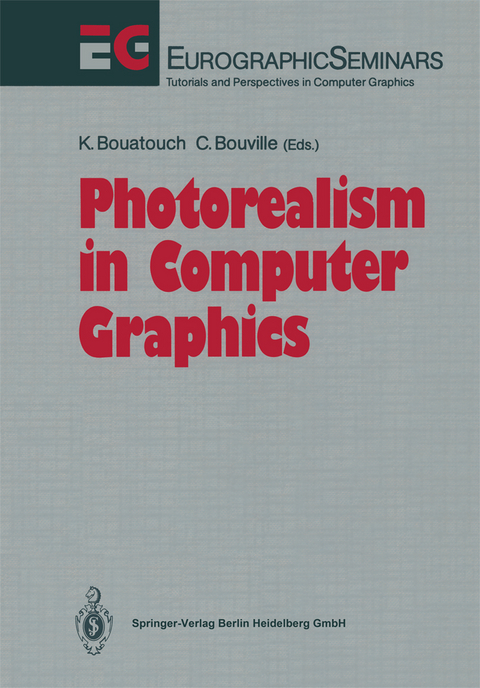
Photorealism in Computer Graphics
Springer Berlin (Verlag)
978-3-642-08112-5 (ISBN)
Invited Paper.- Trends in Radiosity for Image Synthesis.- 1. Efficient Ray Tracing Methods.- Incremental Ray Tracing.- Parametric Surfaces and Ray Tracing.- 2. Theory of Global Illumination Models.- A Theoretical Analysis of Global Illumination Models.- Physically Based Lighting Calculations for Computer Graphics: A Modern Perspective.- Efficient Radiosity Methods for Non-Separable Reflectance Models.- 3. Photometric Algorithms.- A Progressive Ray-Tracing-based Radiosity with General Reflectance Functions.- A Two-Pass Radiosity Method for Bézier Patches.- 4. Form Factor Calculation.- The Hemisphere Radiosity Method: A Tale of Two Algorithms.- Exploiting Coherence for Clipping and View Transformations in Radiosity Algorithms.- A Rapid Hierarchical Radiosity Algorithm for Unoccluded Environments.- Fast Radiosity by Parallelization.- 5. Physics Based Methods.- Newton's Colors: Simulating Interference Phenomena in Realistic Image Synthesis.- Light Sources in a Ray Tracing Environment.- Methods for Efficient Sampling of Arbitrarily Distributed Volume Densities.
| Erscheint lt. Verlag | 1.12.2010 |
|---|---|
| Reihe/Serie | Focus on Computer Graphics |
| Zusatzinfo | XVI, 232 p. 55 illus., 25 illus. in color. |
| Verlagsort | Berlin |
| Sprache | englisch |
| Maße | 170 x 244 mm |
| Gewicht | 374 g |
| Themenwelt | Mathematik / Informatik ► Informatik ► Software Entwicklung |
| Mathematik / Informatik ► Informatik ► Theorie / Studium | |
| Informatik ► Weitere Themen ► CAD-Programme | |
| Schlagworte | algorithms • Beleuchtung • Clipping • Computer Graphics • Computergraphik • Development • Farbe • Fotorealismus • Illumination models • Radiosity • Ray tracing • Realistic imagery • Rendering • Simulation • Strahlungsverfahren • Strahlverfolgungsverfahren |
| ISBN-10 | 3-642-08112-6 / 3642081126 |
| ISBN-13 | 978-3-642-08112-5 / 9783642081125 |
| Zustand | Neuware |
| Haben Sie eine Frage zum Produkt? |
aus dem Bereich


